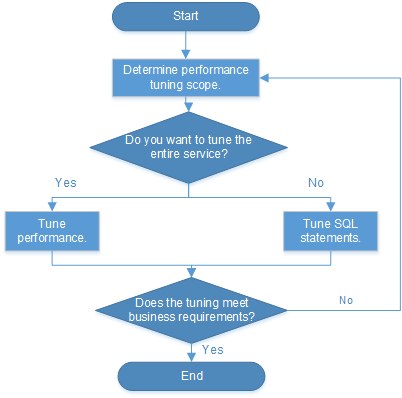Overview
Database performance tuning is the process of optimizing database system configuration and SQL queries to improve database performance and efficiency. The purpose includes eliminating performance bottlenecks, reducing response times, increasing throughput and resource utilization, cutting costs, and improving system stability.
This section provides comprehensive guidance for DBAs on performance diagnosis, system tuning, and SQL tuning, as well as practical examples of SQL tuning.
Precautions
- Database performance tuning is a complex and intricate process. To achieve the optimal performance and efficiency, performance tuning must take into consideration multiple factors, such as hardware, software, queries, configuration, and data structures. Engineers performing the performance tuning must be familiar with how database systems work in great detail, including a deep understanding of the system software architecture, software and hardware configurations, database configuration parameters, concurrency control, query handling, and database applications.
- Performance tuning sometimes requires a cluster restart, which may interrupt services. To avoid that, you are advised to schedule performance tuning tasks that require a cluster restart to occur during off-peak hours.
Performance Tuning Process
Figure 1 illustrates the performance tuning process.
Table 1 gives a brief introduction to each phase of the performance tuning process.
|
Phase |
Description |
|---|---|
|
Obtain the CPU, memory, I/O, and network resource usage of each node to check whether these resources are fully utilized and whether any performance bottlenecks exist. |
|
|
Perform OS and database system-level performance tuning to achieve better utilization of existing CPU, memory, I/O, and network resources, prevent resource conflicts, and improve query throughput. |
|
|
Analyze the SQL statements used and determine whether any optimization can be performed. Analysis of SQL statements comprises:
|
Feedback
Was this page helpful?
Provide feedbackThank you very much for your feedback. We will continue working to improve the documentation.See the reply and handling status in My Cloud VOC.
For any further questions, feel free to contact us through the chatbot.
Chatbot






